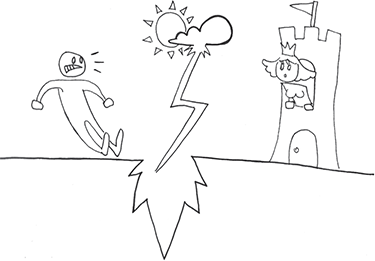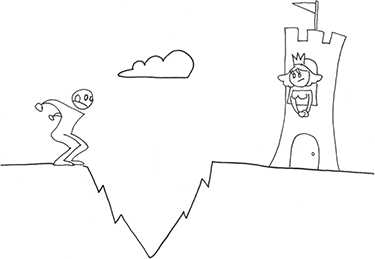Level 3
Writing the Story
ALMOST SINCE THE dawn of gaming, designers have debated which is more important: story or gameplay? Some designers believe games require a story to engage the players. Other designers think a story is what people use to describe play when it is finished. Pro-story designers reply that games are an artistic medium used to tell a story. Anti-story designers counter that a story is what you watch while the game loads. Designers at Game Developer Conferences all around the world face off against each other—one group yelling “BioShock!” while the other side shouts back “Doom!” Silly designers. They are both right and wrong. A game doesn’t need to have a story, and yet it always has a story. Perplexing? While you are chewing over that concept, let’s look at the classical definition of “story” as taught by everyone from Aristotle to famous screenwriters.
Once Upon a Time …
Here’s the most basic structure of a story:
- First, there is a hero who has a desire.

- Our hero encounters an event that throws his life into disarray and interferes with obtaining the desire. This event causes a problem for the hero.

- The hero tries to overcome the problem …

- … but his ...
Get Level Up! The Guide to Great Video Game Design, 2nd Edition now with the O’Reilly learning platform.
O’Reilly members experience books, live events, courses curated by job role, and more from O’Reilly and nearly 200 top publishers.

